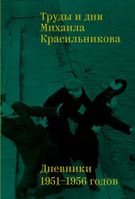
СПб. : Европейский университет в Санкт-Петербурге, 2024
В настоящее издание вошли дневники одного из первых представителей неофициальной культуры Михаила Красильникова (1933–1996). Свое место в пантеоне неподцензурной литературы Ленинграда он завоевал не только стихами, но и экстравагантными поступками, устанавливавшими символиче- скую связь жизнетворчества русского авангарда с перформативными прак- тиками позднесоветского неофициального искусства. 1 декабря 1952 года он и его друзья Юрий Михайлов и ...
Added: March 18, 2024

Malich K., М. : Музей современного искусства "Гараж", 2024
«Я поражен всем виденным. Мое единственное желание — остаться в СССР для работы» — эту фразу архитектора Герберта Вильямса цитировала «Красная газета» в июле 1932 года, когда в Ленинград приехала группа британских зодчих. Другой участник этой деле- гации, секретарь Лондонской архитектурной ассо- циации Фрэнк Йербюри, сообщил журналисту после обзорной экскурсии по советским стройкам: «Я при- ...
Added: March 12, 2024
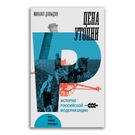
Davydov M., Новое литературное обозрение, 2023
Почему все попытки модернизации и либерализации России за последние 160 лет заканчивались неудачей? Этот ключевой для нашей истории вопрос ставит в своей книге Михаил Давыдов. Чтобы попытаться на него ответить, автор предлагает обратиться ко второй половине XIX века - времени, когда, по его словам, Россия пыталась реализовать первую в своей истории антикапиталистическую утопию. Власть и ...
Added: March 8, 2024

Davydov M., СПб. : Алетейя, 2022
В монографии на основании широкого круга источников обосновывается концепция, согласно которой в 1861—1905 гг. правительство империи – во многом сознательно – пыталось реализовать антикапиталистическую утопию, первую в нашей истории. Утопию о том, что в индустриальную эпоху можно быть «самобытной» великой державой, то есть влиять на судьбы мира, в принципе отвергая и игнорируя то, за счет ...
Added: March 8, 2024

Zelenova D., М. : Институт Африки РАН, 2023
The collection of articles is dedicated to the history and historical memory of the solidarity of the Soviet Union and its successor Russia in the struggle against apartheid in South Africa. The book describes how interaction took place in different areas of cooperation: military, humanitarian and economic. The book contain interviews with the Soviet veterans who recall various aspects of their work ...
Added: March 5, 2024
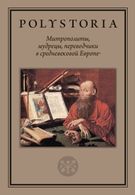
Metropolitans, Sages, Translators in Medieval Europe is a collective book from Polystoria series, issued by the Centre of Medieval Studies of the Higher School of Economics. It contains essays on several subjects of cultural, religious, and political history of Western and Eastern Europe. The collecton of research studies is accomplished by translation into Russian of ...
Added: February 27, 2024

VII Международная научно-образовательной конференции по исторической географии «Исторический подход в географии и геоэкологии» организована Российским государственным гидрометеорологическим университетом и Русским географическим обществом (Федеральная этнографическая комиссия (Москва), Комиссия исторической географии Санкт-Петербургского городского отделения РГО, Комиссия истории географических знаний и исторической географии Московского городского отделения РГО) при участии Института географии РАН, Российского государственного педагогического университета имени А. ...
Added: February 26, 2024
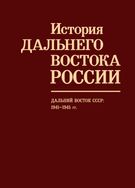
Крадин Н. Н., Галлямова Л. И., Гарусова Л. Н. et al., Владивосток : Дальнаука, 2020
This volume is the first integrating collective research that reveals the history of the Far East of the USSR
during the epochal historic period of 1941–1945. A significant number of unpublished sources have been introduced into scientific discourse and can help to objectively review historical processes and deny numerous falsifications in the coverage of the events ...
Added: February 20, 2024
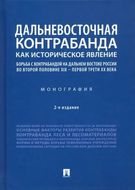
Беляева Н. А., Лаврик Л. А., Ляпустин С. Н. et al., М. : Издательство Проспект, 2019
The collective monograph is devoted to the experience of combating smuggling in the far East of Russia in the historical framework of the second half of the XIX – 30s of the XX century. The main directions of the state anti-smuggling policy, the formation of the border protection system, the organization of the fi ght ...
Added: February 20, 2024
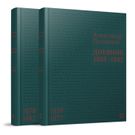
Половцов А. А., М. : Фонд «Связь Эпох», 2022
Дневники А. А. Половцова — уникальный источник по политической истории России конца XIX — начала XX в. К ним неизменно обращаются исследователи, правда, имея в виду преимущественно опубликованные их части. Настоящее издание — дневники А. А. Половцова за 1859–1882 гг. Этот текст, в отличие от последующего текста дневников за 1883–1909 гг., впервые подготовлен к публикации. ...
Added: February 19, 2024
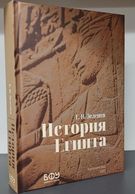
Zelenev E., Калининград : Издательство Балтийского федерального университета им. И. Канта, 2023
Прошлое Египта — уникальный пример истории самодостаточного развития державы на северо-востоке Африки. На египетской земле возникло одно из самых древних и длительно существовавших государств. Судьба Египта тесно связана с генезисом трех авраамических религий — иудаизма, христианства и ислама. Исламский период египетской истории, который охватывает большую часть Средневековья, Новое и Новейшее время (641 г. — по ...
Added: February 10, 2024
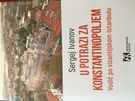
Ivanov S. A., Novi Sad : Akademska knjiga, 2023
Ova knjiga će vas odvesti do znamenitosti koje se ne pominju u turističkim vodičima o Istanbulu: naći ćete crkvu iz IV veka u automehaničarskoj radionici, hodnik drevnog manastira u kućici kućepazitelja i podzemlje dvorca u prodavnici tepiha. Ona će vas dovesti do romantičnih vizantijskih ruševina na nenaseljenim ostrvima Prinčevog arhipelaga i do odlično sačuvanih hramova ...
Added: February 4, 2024

Vinogradov A., Издательский дом НИУ ВШЭ, 2023
The book presents a study of actual and insufficiently studied problems of medieval architecture of Byzantium and the Caucasus. The first part of the book is dedicated to the architecture of Byzantium. The book contains a study of such complex topics as the originand early evolution of the cross-in-square, the genesis of the Kuppelhalle, the ...
Added: February 1, 2024

М. : ФГБУН ИВ РАН, 2023
Proceedings of the Second International Scientific Conference "Art
Art in the East and East in Arts: from Traditional Forms to Contemporary Art Practices" (IVVI / AEEA) are the proceedings of the Second International Scientific Conference "Art in the East and East in Arts
Art in the East and East in Arts" ("Art in the East and East ...
Added: January 27, 2024

М. : Институт всеобщей истории РАН, 2023
The collective monograph examines different types and types of primary sources on the history of Tropical and Southern Africa, in some cases using specific examples. In particular, we are talking about archival materials, the press, memoirs, oral historical tradition, and visual primary sources. The current state of the primary source base for African studies and ...
Added: January 21, 2024

Pritula A., Leiden : Brill, 2023
No one mentions Syriac, – a dialect of the Aramaic language Jesus spoke –, without referring to Sebastian P. Brock, the Oxford scholar and teacher who has written and taught about everything Syriac, even reorienting the field as The Third Lung of early Christianity (along with Greek and Latin). In 2018, Syriac scholars world-wide gathered ...
Added: January 21, 2024

Пермь : Издательский центр Пермского государственного национального исследовательского университета, 2023
The All-Russian Society for the Protection of Historical and Cultural Monuments was established in 1965. It was preceded by almost a ten-year period of massive public and institutional lobbying. The public movement started with a proposal to create an All-Union Society in 1956, but this idea was never implemented. The article deals with the development ...
Added: January 20, 2024
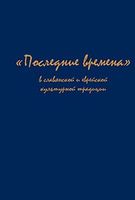
Белова О. В., Копченова И. В., Ясинская М. В. et al., М. : Научно-гуманитарный центр «Сэфер», 2023
The present volume of the annual edition Slavic & Jewish Cultures: Dialogue, Similarities, Differences entitled “End Times” in the Slavic and Jewish Cultural Traditions includes mate-rials from the international conference of the same name, which took place in Moscow on December 7–9, 2022. The volume presents 13 articles by scholars from Russia and Israel who ...
Added: January 11, 2024
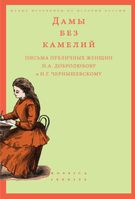
М. : Издательский дом НИУ ВШЭ, 2024
This book introduces to the readers private letters addressed by mid-nineteenth century “public women” to the famous Russian literary critics and publicists N.A. Dobrolyubov, N.G. Chernyshevsky, and others. The ajority of these documents, preserved in the archives of Moscow, St. Petersburg and Tartu and written in Russian, German, and French, belong to the pen of two women with whom Dobrolyubov ...
Added: January 10, 2024
Фомичев Ф. М., Локус: люди, общество, культуры, смыслы 2023 Т. 14 № 4 С. 132-149
В данной статье впервые в отечественной гуманитарной науке затрагивается вопрос определения содержания и границ политического движения «новых правых» в ФРГ в целом и главного современного интеллектуального центра Institut für Staatspolitik в частности. Автор рассматривает основные направления немецкоязычной историографии и на основе трудов ее ключевых представителей формирует общую картину актуальных научных дискуссий. Отдельное внимание уделяется вопросу соотношения «новых правых» с такими более понятными ...
Added: April 27, 2024
Сережникова Д. С., Сергеев А. Ю., Олейников О. М. et al., Российская археология 2024 № 4
Предлагаемая работа посвящена изучению растительного рациона средневековых новгородцев. Основным объектом исследования в данной статье стали растительные макроостатки, полученные из проб, взятых из остатков выгребной ямы, обнаруженных во время раскопок близ средневековой улицы Боркова Великого Новгорода в слое середины XIII в. Многие виды растений, в том числе употребляемые ежедневно, не отражены в письменных документах средневекового периода. ...
Added: April 26, 2024
Сережникова Д. С., Stratum Plus 2024 № 5
This study is devoted to the existence of European elements of material culture in Rus' in the period from the second half of the XII century to the XV century. The paper considers issues related to the possibility of integrating various dress acsessories, jewelry and household items of the medieval West among the Old Rus' ...
Added: April 26, 2024
Pivovarenko A., Сравнительная политика 2023 Т. 14 № 4 С. 72-96
The purpose of the article is to characterize the political platform of the
Istrian Democratic Assembly (IDS), Croatia, as a political power advocating for the idea
of regional autonomy for the Istrian peninsula. Based on the analysis of an extensive
database of empirical materials, this article explores the main points of the political
ideology of IDS, the nature of ...
Added: April 26, 2024
Vinogradov A., Восточная Европа в древности и средневековье 2023 № 36 С. 30-34
Added: April 25, 2024
Vinogradov A., Feissel D., Travaux et Memoires 2023 Vol. 27 P. 541-552
Two previously unpublished Greek inscriptions from the 6th century have been found in the collection of squeezes of the former Russian Archaeological Institute at Constantinople, kept in Saint Petersburg. 1) The epitaph of Laurentios had been discovered in 1898 in Bitola, ancient Heraclea Lyncestis. Described as an “orthodox father” and “crowned by the seats of ...
Added: April 25, 2024
Kanaev A. A., Диалог со временем 2024 № 86(86) С. 210-226
Политический язык Эдуарда Лимонова и других представителей российской праворадикальной оппозиции в 1980–1990-е гг., изучен слабо. История идей этого писателя и политика представлена, в основном, пересказом политических программ, написанных им в рамках «Национал-Большевистской партии», и позиций по актуальным вопросам, часто с акцентом на «культурной» составляющей его деятельности. В статье дан анализ образа «Запада» в его политическом ...
Added: April 16, 2024
Orlov I. B., Антропологический форум 2024 № 60 С. 102-129
The article is devoted to the reconstruction of Soviet-African tourist ties and, above all, the issues of their
formation and complex dynamics of development. It is based on materials from five federal and regional archives
containing information about geography, volumes, pricing policy, features of tour programs and the perception of African reality by Soviet tourists. A number of ...
Added: April 15, 2024
Belov M., Неприкосновенный запас. Дебаты о политике и культуре 2024 Т. 153 № 1 С. 184-196
The article considers the process of entering the word spravedlivost’ into the Russian language from its first uses in the XV century to the end of the XVIII century. The word spravedlivost’ comes into the Russian language from Polish, and the meanings of the word until the XVIII century are realised in the political-legal and moral spheres. However, in ...
Added: April 15, 2024
Chesnokova N., Диалог со временем 2024 № 86 С. 107-123
The article focuses on the descriptions of Yi Seong-gye (Taejo, 1392-1398), the founder of the Korean Kingdom of Joseon (1392-1897),’s enthronement in various Korean source written in the 15th century by Korean intellectuals. The main goal of the study is to describe ways of legitimating royal power in medieval Korea. To achieve this task, I ...
Added: April 10, 2024
Grafova M. A., Шаги/Steps 2024 Т. 10 № 1 С. 12-67
This article explores religious marriage in the USSR
during the New Economic Policy (NEP). From the start, the Soviet
authorities made great efforts to gradually eliminate religious beliefs
within Soviet society. One of the first steps in that direction
was the removal of marriage from Church jurisdiction. Moreover,
Soviet power was constantly trying to compromise the tradition
of religious marriage. However, ...
Added: April 6, 2024
Medakin S., Вестник РГГУ. Серия «Литературоведение. Языкознание. Культурология» 2022 Т. Ч. 2 № 6-2 С. 287-297
The article identifies and analyzes the formation of images of the past in popular music on the example of the tracks from the album “Heroes” by the band “Sabaton”. The work studies the representations of the war images in popular music in the context of the original works of the musical group “Sabaton”, interviews of ...
Added: April 3, 2024
Gusarova E., Proslogion: Проблемы социальной истории и культуры средних веков и раннего нового времени 2023 Т. 7 № 2 С. 163-172
Məhərkä Dəngəl (born ca. 1540 – dead after 1633) — an Ethiopian scribe known as the Court confessor and the Royal secretary. He acted as one of the translators Особенности исторического повествования 171 of the Chronicle of John of Nikiu and the author of the first part of the chronicle of the Ethiopian King Susenyos (1604–1632). The Chronicle of John of Nikiu as a part of early Byzantine historiography represents ...
Added: April 3, 2024
Golovlev A., Диалог со временем 2024 № 86 С. 274-288
The Austrian Federal Theatres are investigated as the largest organizational unity within Austrian cultural politics from a viewpoint of its conceptualization, implementation, and analysis. The longevity of this theatre conglomerate is better explained by path dependence and predominant patterns of thinking within Austria’s bureaucracy, cultural milieu and society than as a genuine strife for economic ...
Added: April 2, 2024
Родин И. В., Вестник Православного Свято-Тихоновского гуманитарного университета. Серия 2: История. История Русской Православной Церкви 2024 № 117 С. 117-126
В статье анализируются задачи и обстоятельства воссоздания французского университета в Страсбурге в условиях возвращения Эльзаса по итогам Первой мировой войны и, в частности, работа двух теологических факультетов — католического и протестантского. Деятельность обновленного Страсбургского университета, благодаря теологическим факультетам представлявшего полный спектр программ высшего образования, и его развитие на протяжении всего межвоенного периода мыслилось французской властью ...
Added: March 26, 2024
Zelenev E., Iliushina M., Iran and the Caucasus 2024 Vol. 28 No. 1 P. 30-41
The article focuses on the period of the Mamlūk transition of power in 1496–1501, which separates two historical eras: 1468–1496, the reign of al-Ashraf Qaytbay, which is associated with the political and cultural prosperity of the Circassian Sultanate, and 1501–1517, the reign of al-Ashraf Qanisawh al-Ghawri (r. 1501–1516), a much less successful ruler whose death ...
Added: March 25, 2024
Vidnichuk A., Quaestio Rossica 2024 Т. ? № В печати С. ?-?
The article analyses the main ways of acquittal and protection of women in Russian courts in the second quarter of the 18th century. The paper focuses on two main questions: could the defendants construct their own narratives and thus influence the course of the trial? Were the female perpetrators able to exploit the existing gender ...
Added: March 21, 2024
Vinogradov A., Желтов М., Новгородский исторический сборник 2023 № 20(30) С. 43-56
Archbishop Nifont of Novgorod can be considered to be among the most prominent ecclesiastical and political figures of the Russian Church in the second third of the XII century. This is particularly evidenced by the fact that all the three oldest Russian chronicles, i.e. the Kiev, Suzdal and Novgorod Vladychnaja chronicles, explicitly mention his death; ...
Added: March 18, 2024
Glushkov A., Козлова К. О., Ismakaeva I., Гуманитарные исследования в Восточной Сибири и на Дальнем Востоке 2024 № 1 С. 75-84
The resettlement program in the post-war USSR implied the creation of conditions for mass voluntary migration to the regions that were in dire need of labor. However, despite the benefits provided to migrants, their flow did not always satisfy the needs of collective farms, lumber camps and other enterprises. Under these conditions, the importance of ...
Added: March 17, 2024
Maliavin V., Восток. Афро-азиатские общества: история и современность 2023 № 2 С. 142-152
The stalemate in China-Taiwan relations calls for new approaches to the problem of security and stability in APR. The article examines the current confrontation between the "two sides of the Taiwan Strait" in its relation to Chinese civilization’s specificity and globalization processes. Taiwan is not just China's periphery, but also the last Chinese frontier. Taiwan's ...
Added: March 16, 2024
Robbeets M., Hudson M., Ning C. et al., / Cold Spring Harbor Laboratory. Series 005140 "Biorxiv". 2022.
In a recent study we used an interdisciplinary approach combining linguistics, archaeology and genetics to analyse the Transeurasian languages. Our analysis concluded that the early dispersals of these languages were driven by agriculture. A preprint published on this server presents objections to the Transeurasian hypothesis and its association with farming dispersals. However, close inspection of ...
Added: October 31, 2023
Kraikovski A., Dadykina Margarita, Vsemirnov M., / Basic Research Programme. Series HUM "Humanities". 2020. No. 187.
The different levels of the tourism service system are not just another intermediary between the heritage and the visitor, but an important aspect which influences the construction of heritage and past discourses. Noel Salazar suggested considering natural and cultural-historical heritage sites as the basis for constructing "imaginary realities". We explored the formation of a visual ...
Added: June 11, 2023
Орлова Г. А., Tanis K., Lukin M. et al., / Basic Research Programme. Серия HUM "Humanities". 2022. № 211.
Responding to the reproaches addressed by Michel de Certeau a quarter of a century ago to historians, who use time as a taxonomic tool without reflecting on its social structure, we seek to make time visible through the analytical tools developed currently by sociologists and anthropologists of time. Setting the analytical optics, we are turning ...
Added: December 3, 2022
Zaretsky Y., / Высшая школа экономики. Серия WP19 "Исторические исследования". 2022. № 01.
В исследовании рассматривается содержание первого печатного обзора всемирной истории на русском языке и его бытование в России в первой половине XVIII столетия. Этот обзор, «Введение краткое во всякую историю», был издан в 1699 году в серии учебных пособий по разным областям знаний, составленных Ильей Федоровичем Копиевским (ок. 1651–1714) и изданных по указу Петра I в ...
Added: May 7, 2022
Vdovin A., Лейбов Р., Казакова Е., / Институт русской литературы (Пушкинский дом) РАН. Серия B003 "Репозиторий открытых данных по русской литературе и фольклору". 2021.
В базе данных представлена роспись литературных произведений и отрывков из них, напечатанных в русскоязычных хрестоматиях, выходивших на территории Российской Империи с 1805 по 1912 гг. Принципы отбора материала, оценка репрезентативности базы и пояснения по формату и содержанию данных приведены в файле readme.txt. ...
Added: December 24, 2021
Seleznev M., / Издательский дом НИУ ВШЭ. Series WP "Working Papers of Humanities". 2021.
In polemics of Orthodox theologians with Jews, Protestants and Catholics, the Septuagint has often been regarded as the hallmark of Orthodoxy. However, throughout the history of the Orthodox tradition violent polemics against allegedly corrupted Hebrew Bible existed side by side with the usage of the same Hebrew Bible text in commentaries and translations. The Orthodox ...
Added: November 10, 2021
Lapina-Kratasyuk E., Oiva M., / The Language Bank of Finland. Series http://urn.fi/urn:nbn:fi:lb-2020081502 "Haastatteluaineisto Yves Montand Neuvostoliitossa, lähdemateriaali". 2021.
The topic of the interview data are the personal memories and family stories about the tour of French-Italian singer-actor Yves Montand in the Soviet Union in 1956-57. It was collected in September-November 2019 in Russia (and in distant communication method abroad). It was part of Oral History – Theory, Practice and Uses. Case Montand in the ...
Added: August 30, 2021
Afanasiev A., Komosa K., / Издательский дом НИУ ВШЭ. Series WP "Working Papers of Humanities". 2021.
The article examines the self-identification and professional values of the university community in post-Soviet Russia. On the basis of the corpus of the interviews, which were recorded by the Poletayev Institute for Theoretical and Historical Studies in the Humanities (Moscow) in the 2010s, the authors analyse how the contemporary Russian scholars consider the problems of ...
Added: February 18, 2021
Королева А. А., Кобзева В. И., / Basic Research Programme. Series HUM "Humanities". 2020.
The paper investigates interviews from the archive of Poletayev Institute for Theoretical and Historical Studies in the Humanities (IGITI) which were conducted in 2010s with Russian scholars and professors. The data from these interviews is used to study transnational academic mobility experience in the post-Soviet years (2000s–2010s) by young Russian scholars – the respondents of ...
Added: December 13, 2020
Levin F., Selin A. A., Khvalkov E. et al., / Издательский дом НИУ ВШЭ. Series WP "Working Papers of Humanities". 2020. No. 196.
This paper is focused on the image of the Other in early modern European imperial discourses as exemplified by Venetian discourse about Istria and English discourse about Ireland, which have not been previously compared, in the narratives by Pietro Coppo, Fynes Moryson, John Davies and Barnabe Rich.
The authors of the article have analyzed mechanisms of ...
Added: December 12, 2020
Lychakov N., Saprykin D., Vanteeva N., / Basic Research Programme. Series HUM "Humanities". 2020.
Using data from official manufacturing censuses, we compare labour productivity in Great Britain and the Russian Empire around 1908. We find that Russia’s labour productivity was at 81.9 per cent of the U.K. level. Russia’s productivity was on a par with France’s and significantly superior to Italy’s. We also find that the majority of Russian ...
Added: December 10, 2020
Kolesnik A., Rusanov A., / Издательский дом НИУ ВШЭ. Series WP "Working Papers of Humanities". 2020. No. 198.
The cultural heritage was defined in the 19th century in many European countries and the United States as “objects of cultural value.” In the context of building national states mostly material objects, archaeological sites and historical monuments, were marked as heritage. Further transformation of the concept of heritage took place after the World War II, ...
Added: December 10, 2020
Grant-based funding became one of the crucial innovations in the Russian academia of the 1990s. It has been studied from quantitative and institutional perspectives while our paper focuses primarily on oral histories of grants that shed light on their subjective meaning. Interviews show that some Russian academics remember their first experiences of applying for various ...
Added: December 10, 2020
Alexey G. Vasilyev, / Basic Research Programme. Series HUM "Humanities". 2020. No. 195.
The paper is focused on Stefan Czarnowski (1879-1937), early Polish sociologist, one of the founders of professional sociology in Poland, and author of an original concept in the historical sociology of culture. His ideas about forms and ways of functioning of the past in the present as well as mechanisms of nation-building (using the example ...
Added: December 7, 2020
Lavrinovich M., / Basic Research Programme. Series HUM "Humanities". 2020.
The paper addresses the problem of interacting of visual and written components for creating of historical narrativity, and its impact on the social practices of the archival employees in the late 18th – early 19th century. The research is focused on the case of Moscow Archive of Foreign College, where a gallery of those who administered Russian foreign ...
Added: November 21, 2020
Lysenka L., / ПФИ НИУ ВШЭ. Series WP BRP "HUMANITIES". 2020. No. 194.
The music of vocal-instrumental ensemble "Pesniary" is recognized in Belarus as a cultural heritage that must be saved and protected. In this paper, the approach of critical heritage studies is used to show, how this meaning of heritage is created, what heritage discourses exist in Belarus and how they constitute different meanings of heritage. The ...
Added: November 17, 2020
Khvalkov E., Агеева Д. А., Shkil M. et al., / National Research University Higher School of Economics. Series WP BRP "Basic research program". 2019. No. WP BRP 184/HUM/2019.
The collection of Western European manuscripts gathered by Nikolai Petrovich Likhachev (1862–1936) and currently stored in the Scientific and Historical archive of the St. Petersburg Institute of History of the Russian Academy of Sciences (the Archive) contains, among other documents, a number of those coming from the Latin West. The vast majority of this array ...
Added: October 30, 2020
Khvalkov E., Шистерова А. Д., Кузнецова А. Д., / Издательский дом НИУ ВШЭ. Series WP "Working Papers of Humanities". 2019. No. No. WP BRP 183/HUM/2019.
This study presents a surveyofthe formation of thecollection of Nikolai PetrovichLikhachev (1862-1936), a great collectorand Member of the Academy of Sciences of the USSR, through his life and research interests. This collection was unique for Russia at that time. As a researcher and a collector, Likhachev laid the foundations for the professional study of watermarks ...
Added: October 30, 2020
Таланцева М. А., Райковская А. Я., Kholodilin K., / Высшая школа экономики. Серия WP2 "Количественный анализ в экономике". 2020. № 1.
В данной работе исследуются факторы, определявшие плату за съёмное жильё в Российской империи, а также сравнивается распределение цен на наёмное жильё в различных городах тогда и сейчас. Для этого используются статистические данные 1232 городов за 1910 год и за 2019 год с сайта Numbeo. По результатам регрессионного анализа, на уровень цен в городах дореволюционной России ...
Added: June 15, 2020
Krivushin I., Миронова Е. В., / Высшая школа экономики. 2020. № 1.
В работе рассматривается история и главные направления изучения националистического и сепаратистского движения в Шотландии в зарубежной и отечественной политической и исторической науке. Выявляются основные периоды исследований и наиболее важные публикации по данной проблематике. Авторы приходят к выводу, что эволюция шотландского сепаратизма после референдума 2016 г. о выходе Великобритании из ЕС до сих пор не стала предметом ...
Added: May 28, 2020